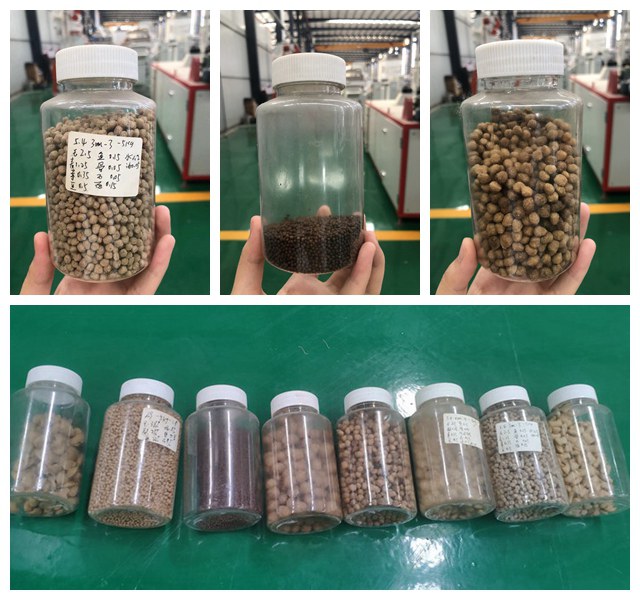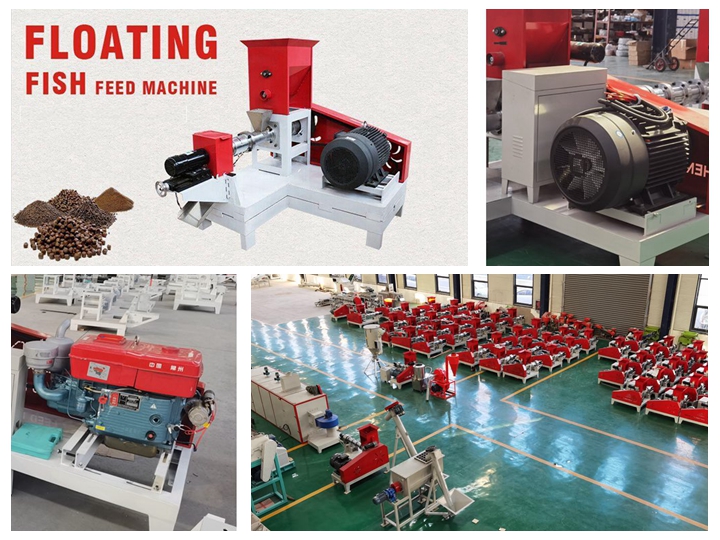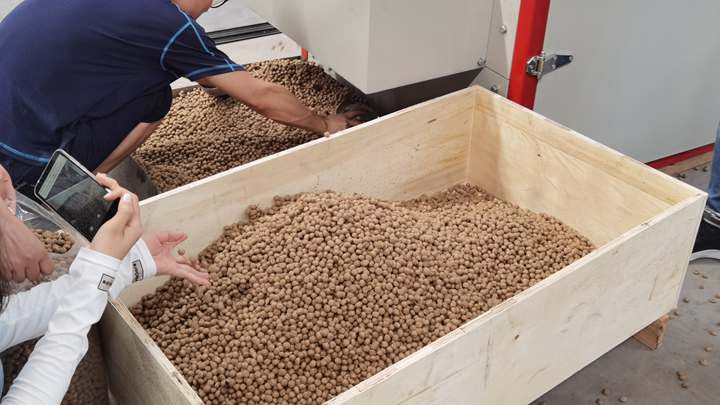
Aug 02, 2020 · The production of catfish in Nigeria based on current studies, it showed that catfish production, distribution and marketing are way lower than its demand. If you’re interested in doing catfish farming business in
.jpg)
Features of Feed Pellet Production Line 1. Advanced technology, high capacity and low energy consumption. 2. The modular structure is convenient for assembly and disassembly, facilitating the shipment and installation. 3. PLC
.jpg)
2021/08/10 · They are produced by Premier Feed Mills Limited (a subsidiary of Flour Mills, Nigeria), with their production plant in 3 locations in Nigeria: Ibadan, Calabar, and Kaduna. For their popularity and success story in producing poultry
.jpg)
2020/05/19 · Production Capacity: 200KG/H. Country: Nigeria. Date: May 19, 2020. Application: Widely used for small and medium fish farming to produce high-grade aquatic feed pellets for fish, catfish, shrimp, crab, lobsters, etc. On May 19, 2020, two sets of fish feed production lines for Nigerian customers were successfully delivered.
.jpg)
2020/03/24 · February 2020 online training session was the first of its kind for us at Afrimash as we had two facilitators to train us on The Basics of Catfish Farming in Nigeria. The training was detailed with important modules which include ; Introduction to Catfish Farming. Rearing Facilities in Catfish Farming. Catfish Breeding. Feeding and Feed []
.jpg)
2017/09/15 · the total of 5,300,000 metric tonnes of feed produced in 2015, aqua feed production stood at 647,750. metric tonnes, contributing 12 percent, second to poultry production. This suggests an annual
.jpg)
2016/02/01 · Catfish feed requires certain nutrients that will help the farmer optimize the growth as well as increase the profit on their catfish farming business. Below are the 4 classes of nutrients, in order of importance, essential in any feed formulation: Protein: This class of nutrient is required for building body tissue and replacement of damaged

Product Application. Automatic Nigeria catfish feed machinery catfish feed production line catfish feed make machinery is suitable for producing fish feed in all shapes. It is widely used to produce floating fish feed,sinLD fish feed etc. Specifications FOR 1-2TON/HOUR FLOATING CATFISH FEED PRODUCTION LINE. EXTRUDER.
.jpg)
Nigeria has great potential in fish farms development. Azeus Fish Feed Machinery provides step-by-step instructions on small- and medium scale fish farm establishment. 3. Find Space If you want to start small, you can setup a

Nigeria: 3 Sets of Fish Feed Prodution Lines. In March, three sets of fish feed production lines produced by our factory were delivered to our Nigerian customer, who customized two 300kg/h fish feed production lines and one 500kg/h fish feed production line for his three large fish farms. Whatsapp ME Quote Online.

The main steps of feed production in Nigeria are as follows: ♦ Collect raw ingredients like maize, cowpeas, groundnut, melon, potato, cassava and so on. ♦ Clean materials to remove impurities and grind raw materials into powdery form with a feed hammer mill.
.jpg)
Home » Case » Nigeria: 3 Sets of Fish Feed Prodution Lines Nigeria: 3 Sets of Fish Feed Prodution Lines In March, three sets of fish feed production lines produced by our factory were delivered to our Nigerian customer, who customized two 300kg/h fish feed production lines and one 500kg/h fish feed production line for his three large fish farms.
.jpg)
The virus replicates in EPC, FHM and RTG (rainbow trout gonad) cells between 15°C and 25°C. A unique feature of this pathogen is the production of syncytia in both tissues and cell culture. The bacilliform particles measure 130–185×31–47 nm.
.jpg)
2020/07/09 · We have many different capacity for poultry feed making production line: Small capacity simple line: 600-800kg/h capacity, about $7,000~$8,500/set; Bigger capacity complete production line: 1-2T/H, $22,000~$28,000; 5T/H, $100,000~120,000. Get Price Now! If you want to know more about the machines, Inquiry Us! Email: inquiry@sunwitindustry.com.
.jpg)
2019/05/20 · modern feed mills in Nigeria will reduce feed production cost. Growth in the poultry feed sector has nonetheless slowed in the last 2-3 years due to reduced consumer income following Nigeria’s economic recession and subsequent major currency devaluation in 2016.